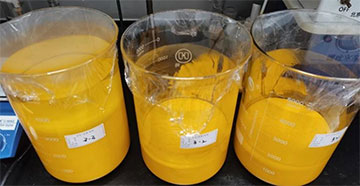
New life: Toxic lead waste extracted from used car batteries has been used to create high-performance photodetectors.
Researchers in China say they have devised a novel recycling scheme to convert the waste material from discarded lead-acid batteries into photodetectors operating across the ultraviolet and visible range (Opt. Lett., doi: 10.1364/OL.480972). Using an inexpensive solution-based process, a team led by Longxing Su at the Southern University of Science and Technology transformed the lead paste extracted from car batteries into microcrystals of lead iodide that are pure enough to create highly responsive photodetectors.
Less pollution
The lead paste inside used car batteries is harmful to both people and the environment if not recycled properly. Different methods already exist to reprocess the material, but they tend to be expensive and can also produce secondary pollution. In contrast, the one-pot method developed by Su and colleagues requires only standard chemicals and avoids the need for costly commercial precursors.
“This recycling strategy could significantly reduce the lead pollution resulting from waste lead-acid batteries,” commented Su in a press release. “The photodetectors can be used for a variety of applications, including optical communications, chemical analysis and imaging.”
Chemical reactions
The lead paste is first mixed into a solution of three common chemicals—citric acid, hydrogen peroxide and sodium citrate—and then stirred at 40°C for 24 hours. During this time, chemical reactions convert all the main constituents of the lead paste into lead citrate, most of which dissolves into the solution. After filtering and adding hydroiodic acid, a yellow precipitate of lead iodide is formed that, once dried, yields microcrystals with a high purity and crystal quality.
A photodetector fabricated from the recycled material shows a strong response to light from ultraviolet wavelengths into the green band. Under a bias voltage of 10 V the device achieves a dark current as low as 1.06 nA and an on-off ratio of 103, while the photocurrent reaches almost 110 nA when illuminated by green light at 500 nm. The photodetector also exhibits rapid response speeds, with a rise time of 69 ms and a decay time of 64 ms, as well as excellent stability and repeatability.
Scaling up
The researchers are now working to scale up their process to produce large volumes of lead iodide from waste batteries. External verification of the recycled material and the photodetectors will also be needed to enable commercial use. “We hope that our work will be noticed by chemical companies and downstream firms, so that our method can be extended into the market,” said Su. “Our green reactant recycling method may also be useful for other applications, such as making solar cells.”

